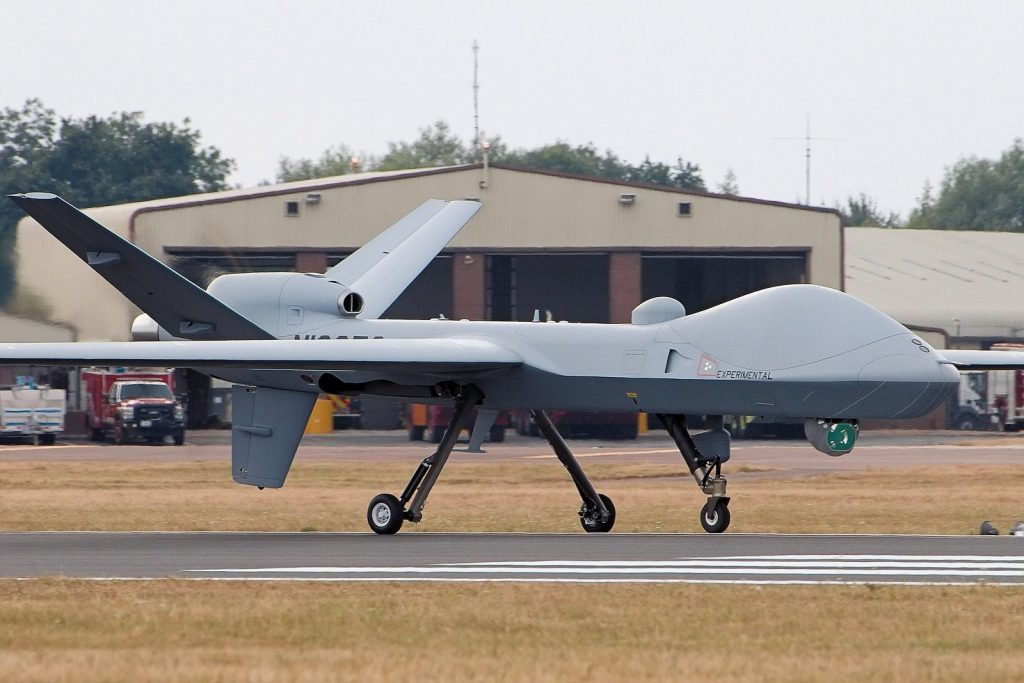
According to a leaked document from China’s Ministry of National Defense, Beijing has been actively growing its fleet of unmanned aircrafts for espionage purposes as well as compete with its US peers.
According to a trusted source which supplied the July 2017 material to The Epoch Times, the documents describes China’s naked ambition to dominate the world under what it called “full dimensional warfare”; this refers to control of land, sea, air, space and the electromagnetic spectrum for military purposes.
To achieve this ambitious aim, China’s dictatorial regime has detailed a plan to design one to two types of small, long-range military drones; it also calls to establish a factory to produce 1,000 such drones per year. The document reveals that this requires around $20 million (130 million yuan) in investments towards the drone making company whose production would begin by the end of 2018.
“Implementation of the program will arm our national defense with the latest combat power in future vertical warfare and make it capable to contend with U.S. military weapons, giving it marked military significance,” states the document.
Although the document does not shed light on the cost of making the drones, a 2017 directive from the Party’s Equipment Development Department described a project that matched the description of the above-mentioned drones, with an estimated budget of around $927,859 (6 million yuan) to build a prototype and publish a flight test report by 2020.
The Chinese defense department document branded such drones as critical to “whether a nation could engage in modern-day combat.”
“In future warfare, seizing more information resources while controlling and restricting other nations’ information will be a key component for competing with nations during peaceful periods, and an important combat strategy in times of war,” states the document, citing “low costs” and the “ability to fight in a dangerous environment” as some of the features that made these drones desirable.
The project called for collaboration with a number of Chinese engineering and aeronautical universities. Including Zhejiang University; incidentally this university has received around $15.5 million (100 million yuan) for projects from the Chinese air force and other state agencies.
Chinese drone makers dominate the global drone market; Shenzhen-based dronemaker DJI has been sanctioned by the United States for providing “high-technology surveillance equipment” to China’s dictatorial regime which has a history of human rights abuses. Case in point: according to a report from the United Nations, more than 1 million Uyghurs are being held in modern concentration camps in Xinjiang, China.
According to market research firm Drone Industry Insights, China controls nearly 70% to 80% of the commercial global drone market, as of October 2020. In the combat drone category however, China has still some way to go.
The current engine types found in Chinese military drones, such as piston and turboshaft engines, are not suitable for high altitude and long duration flights, states the leaked document. The document also noted that China has “made some breakthroughs in replicating Rotax 914,” a four-stroke, four-cylinder turbo-charged engine made by Austrian company BRP-Powertrain, that it said has been the world’s leading engine system.
According to the document, China’s new drone should be able to fly for more than 24 hours and have a carrying capacity of 13.2 pounds (6 kilograms).
The Trump Administration has increased scrutiny for security vulnerabilities, with the U.S. Army warning that they could be exploited by the Chinese regime to hijack data and even control the vehicle.
The U.S. Department of Justice has also prosecuted multiple individuals for conspiring to export drone-related technologies to China.
Case in point: in 2009, a retired professor from the University of Tennessee received a 48-month sentence after admitting to illegally exporting 15 different defense materials to a Chinese national. The data he transported involved a U.S. Air Force project to develop an advanced form of weapon system drone. In 2014, two Taiwanese nationals pleaded guilty to their roles in conspiracy to traffick parts from a small drone known as “RQ-11B” which is manufactured by U.S. defense contractor AeroVironment, as well as manuals for the RQ-4 Global Hawk drone. In August 2016, Man Wenxia was, a resident of California was sentenced to 50 years in prison for attempting to export military equipment, including a drone, to the Chinese military. In August 2017, Sun Fuyi, a Chinese national, was sentenced to three years in prison over a scheme to procure high grade carbon fiber for the Chinese government, which has applications in drones and other aerospace technologies.





